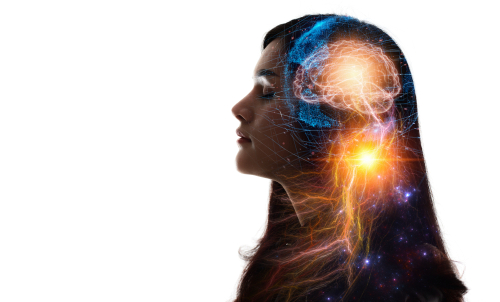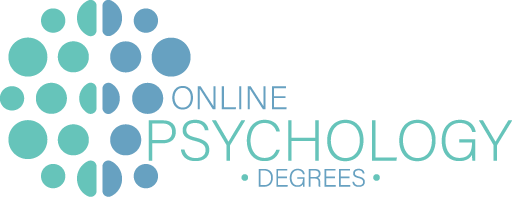 What is the learning psychology definition? Psychology theories of learning have done much to influence the way people:
What is the learning psychology definition? Psychology theories of learning have done much to influence the way people:
- teach
- create course curriculum
- explain things to their children
Psychological theories have sprung up that reflect the changing values in our social environments and the popular influences of the day. In the 1960s, cognitivism moved to the forefront of learning theory, exactly when popular culture was embracing “do your own thing.” Behavioral learning theory, a more basic reward-and-learn postulation, became a little less popular about then.
Learning theories and learning in psychology are very persistent. Many explanations have been devised to define the psychology of learning, possibly because learning is complex and one psychological theory does not fit everyone or every situation. These are prominent theories of learning that attempt to explain how we go to bed at night a little smarter than when we woke up that morning. Here are five educational learning theories.
Behaviorism
Behaviorism learning theory dates back to the late 19th century. It was born in an era when natural sciences were at the forefront of scientific discovery. Behavioral learning theory explains learning as a conditioned or operant response to the environment, which supplies either positive or negative consequences to any behavior. Classical conditioning is a learning process that consistently pairs two stimuli. This can be effective in classroom management. Teachers can pair positive reinforcement with naturally occurring stimulus. It also postulates that learning is only complete when it can be seen as a change in behavior.
Behaviorism postulates learning as starting with a blank page. American psychologist B.F. Skinner (1904-1990) argued that the psychological theory was incomplete, however, because it did not explain how we overcome initial failures to do things like ride a bicycle. Skinner added the concept that prior thought and emotions also came into play for human learning. Because of this, Skinner’s work was sometimes labeled “radical behaviorism.”
Cognitivism
Cognitivism is the cognitive learning theory, which was led by American psychologist, Jerome Bruner. This learning theory is often tied to behaviorism in practice, but the learning theories are polar opposites. Cognitivism, or cognitive psychology, explains learning as based on understanding. The mind, when receptive to new ideas, actively processes new information to arrive at an understanding that relies on incorporating prior knowledge and assumptions. This puts thinking at the forefront of the learning process. Learning is evidenced by new understanding, not behavioral change.
Cognitive learning theory relies on a learning process in which new information is weighed against prior knowledge. How does new information fit in with previously learned information? This brings into play processes like:
- problem solving
- analysis
- memory
Understanding is defined as a cognitive “schema,” which is analogous to awareness or meaning. Learning is defined as a change in an established schema.
Constructivism
Like cognitivism, constructivism sees learning as an active mental learning process. Under constructivism theory, people build or construct knowledge based on social or situational experiences. This allows people to accumulate information and to test it through social interactions in this social learning theory.
In this manner, it would seem that knowledge would eventually homogenize. But that isn’t the case. Constructivism says people build knowledge based on subjective considerations. Individuals then come to individual, subjective conclusions in this social learning theory. Knowledge is still viewed as a conceptualized process with learning seen as the result of interactions with the environment and the constant testing that we rely on to process information.
Humanistic
Humanistic theory also reflects the values of its age. Taking root in the 1960s, humanistic theory postulates that learning is tied to:
- motivations
- potential
- free will
It is this theory that has given us the term “self-actualization.”
This learning theory focuses on the entire person. The humanistic, whole-person approach does not recognize a change in human behavior or a change in meaning as evidence of learning. What it relies on is people fulfilling their potential. This is done through observations and accumulated experiences.
Rather than didactic teaching, humanists believe role models are the best teachers. They provide a reason for pursuing new information and help keep goals realistic. When a teacher says, “Break up into smaller groups and discuss amongst yourselves,” they are using a humanistic approach.
Experiential
Espoused by educational theorist David Kolb, experiential learning theory sees learning as a four-step process that includes:
- concrete experiences
- reflective observation
- abstract conceptualism
- active experimentation
Here, experience leads to reflection, then conceptualization, then testing, which involves new experiences. It is seen as a self-sustaining cycle with each of the four steps required for learning.
Kolb also says emotions, prior learning, and style of processing are involved. As such, there are four learning styles in the experiential learning theory. Some people prefer:
- doing
- watching
- reading and reflecting
- a gut-level response followed by experimenting
This theory gave birth to multi-modality teaching. Learning occurs when experiential teachers deploy:
- hands on learning
- reflections
- reading
- watching slides or films
- lectures
- field trips
Teachers also deploy other methods to accommodate how students learn with different learning styles and develop their cognitive development. In a positive learning environment, a student can guide their own learning to gain new skills. Building on previous knowledge, students observe and make critical reflection while meeting learning objectives. Children learn and retain information, receive positive reinforcement, and gain social interactions. Students build more knowledge through natural stimulus by setting their own goals and building on life experience.
SUMMARY
What is learning in psychology? Educational learning theories and the psychology of learning include:
- behaviorism
- cognitivism
- constructivism
- humanistic
- experiential
These are among the most prominent cognitive learning theories that have influenced our day-to-day lives. Other theories of education include the:
- Maslowian hierarchy of needs
- Elaboration learning theory
- ADDIE (Analyze, Design, Develop, Implement and Evaluate)
- Bloom’s Taxonomy
These five learning theories have greatly influenced teaching, parenting and the so-called helping professions, which includes clinical psychologists, therapists, and counselors. Abraham Maslow’s hierarchy of needs, for example, postulates that people need to have their basic needs met. This includes food, shelter, and security. This has to be done before they can seek out more transcendent needs, such as love, esteem, and self-actualization. A therapist using Maslowian principles would attempt to secure a client’s basic needs before attempting to work on loftier goals.
In practice, of course, some of these psychology concepts are applied in conjunction with others. Cognitive-behavioral therapy makes use of two theories simultaneously and rational-emotive-behavioral therapy, espoused by New York City psychiatrist Albert Ellis (1913-2007), melds three different modalities in order to help heal emotional distress and behavioral problems.
Our environment and social developments also affects the science of learning psychology. Right on time, for example, comes the learning theory of Connectivism, which is frequently called the learning theory for the digital age. This learning theory says that information is random, even chaotic, but those who can make connections in this environment will do well. “How are learning theories impacted when knowledge is no longer acquired in the linear manner?” asks George Simens in a paper posted by elearnspace in 2004.
Among the answers to that: “The ability to see connections between fields, ideas and concepts is a core skill,” Siemens wrote, attempting to put a modern spin on an age-old puzzle.
Anthony Hall
BS Psychology | Empire State College
Related Resources:
- What Jobs Can I Get With A Psychology Degree?
- 10 Key Moments In The History of Psychology
- 5 Key Facts About Psychology in the 21st Century
